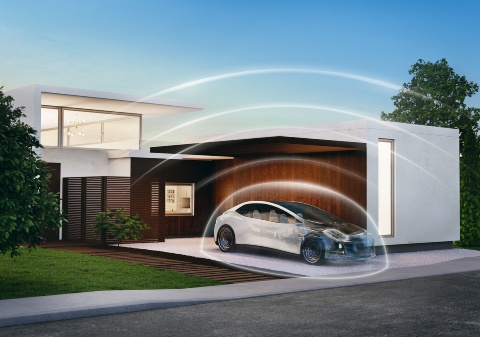Google's Ripple Radar Standard & How Infineon is Involved

Ripple, Google’s open-radar API standard that’s set to boost the adoption of radar technology will change lives in meaningful ways.
From advanced gesture control for vehicles to wireless in-home health and sleep monitoring, radar technology is on the leading edge of numerous industries. In fact, you can already see Infineon’s radar technology in the form of Google’s Pixel 4, with hand-gesture recognition built into the phone.
To gain a clearer understanding of Ripple, and Infineon’s role in Google’s recent API standard, we asked Senior Director of Sensor Systems & IOT Raj Khattoi to offer his knowledge and insights.
If you’re an engineer who’s excited to contribute to trailblazing projects, visit the Infineon Careers page.
What Is Ripple™?
Ripple is standardizing radar technology for rapid adoption.
Radar tech has already hit the shelves in the form of Google’s Soli-powered Pixel 4 phone, allowing users to snooze alarms or pause music with a simple hand gesture, but the lack of standardization has limited widespread adoption.
In 2015, Google unveiled their Soli sensor to plug radar technology into their phones, and in 2017 partnered with Infineon to work on their radar capabilities due to slow adoption by both consumers and Infineon’s corporate customer base. According to Raj, a big reason for this was the lack of an open-radar API standard that could bring the technology to non-Google, and therefore non-Infineon, devices–which is exactly what Ripple helps accomplish:
Raj Khattoi, Sr. Director of Sensor Systems & IoT: “Before the Ripple standard, customers were constantly worried about adopting this kind of technology because it would need to be aligned with Infineon’s specifications. Now, radar technology has an agnostic standard and can finally be adopted at the rate it was meant to.”
Infineon’s Partnership with Google
Since partnering in 2017, Infineon and Google have continuously worked together on consumer-facing radar technology.
In fact, Infineon’s radar technology can be found inside the previously mentioned Google Pixel 4. In 2019, Infineon developed a 60GHz radar chip to enable gesture-controlled interaction between consumers and their devices. While other customers wanted to adopt this technology, some development time issues and a lack of standardization made it difficult to push.
After realizing a standard was needed, Google started standardizing radar technology in 2021. Infineon was an early adopter alongside Texas Instruments, Qorvo, and NXP. Now, the group is made up of 15 companies with a stake in radar applications.
A common question relative to Ripple is why Google chose an open API standard versus a proprietary one. Here’s what Raj had to say:
Raj Khattoi: “The open API allows for faster consumer adoption. Once we have software libraries and an open standard, customers can start using Infineon Hardware without even contacting us. We also firmly believe that everyone will eventually benefit from standardization, and a proprietary approach is contrary to that belief.”
Ripple’s Consumer Applications
Radar technology can already be seen in daily life, such as Google’s Soli-powered Pixel 4. According to Raj, however, one of the most exciting applications is within the automotive industry – in-cabin monitoring systems, refined movement sensing, and even user privacy both on the road and at home are a few examples of radar applications that are in the works.
Raj Khattoi: “Radar has numerous applications for vehicle safety, driver comfort, and even privacy while driving. It’s no question that the automotive industry as a whole wants to bring radar to vehicles, with Ford being an early adopter. But radar has so much more potential than auto applications.”
From in-home health monitoring and presence detection to motion sensing, sleep monitoring, and gesture sensing, radar technology will change the world in very big ways. And thanks to the Ripple standard, the adoption of these devices is gaining consumer momentum.
World-Changing Potential
Healthcare and elderly care will directly benefit from radar applications.
Raj notes that radar is the only type of modern technology that enables wireless vitals sensing, health monitoring, and sleep monitoring, without contact. It’s currently being used in Japan for detection in elderly homes, highlighting an opportunity for in-home health monitoring for seniors. As people live longer, Raj says, monitoring health will become that much more critical.
Raj Khattoi: “At Infineon, we’re working on a solution that offers presence detection, sleep monitoring, health monitoring, and user privacy, all in one powerful sensor.”
Engineer the Future with Infineon
Google’s Ripple Radar standard is just one of the many revolutionary projects Infineon is working on.
